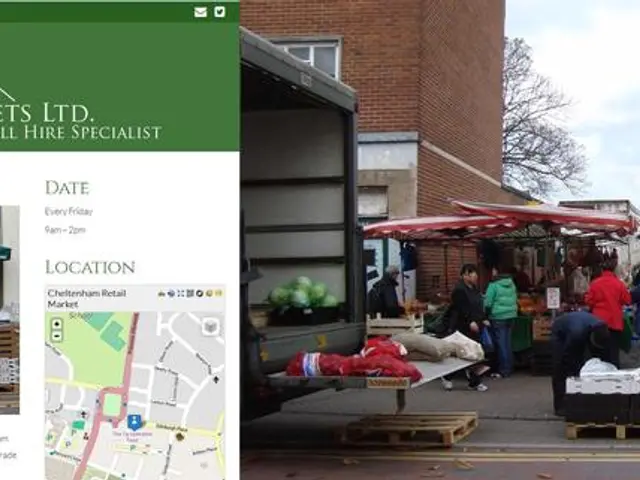Strategies for Updating Campus Security Measures as Students Return for New Academic Year
Modernising Campus Safety: The Role of Digital and Mobile Technologies
University campuses are embracing digital and mobile technologies to significantly improve student safety, moving away from reactive measures towards proactive, real-time solutions.
One such innovation is the integration of LiDAR, digital twins, and cloud-based video management systems (VMS). These technologies create a 3D environment map that detects movements in real time, enabling quick response to incidents. Digital twins, virtual replicas of campus infrastructure and people, allow for simulation, prediction, and response to emergencies. Cloud-based VMS, enhanced by AI, offers flexible, scalable management and monitoring of video feeds remotely, helping security teams prioritise alerts and respond efficiently [1].
Another key development is the deployment of 5G networks and IoT-enabled smart campus infrastructure. This supports fast, reliable connectivity for a wide range of connected sensors and devices across campus, enabling continuous monitoring and risk management without disrupting the open and welcoming campus environment. AI-enhanced facial recognition can identify potential threats immediately, while mobile-enabled features like panic buttons and discreet text-to-911 services support rapid communication in emergencies [2].
Mobile safety apps tailored for students are also playing a crucial role. These apps offer one-touch panic buttons, GPS location sharing, and real-time communication with campus security, improving personal safety on the go. University-specific safety apps often integrate tightly with campus emergency systems and services like escort programs or safe ride options, allowing faster, campus-aware responses. Features like anonymous reporting empower students to notify authorities of safety concerns without reluctance [4].
Data security and access control technologies are equally important. Strong authentication methods such as two-factor authentication, hardware tokens (e.g., YubiKey), and secure password policies protect users' digital identities on the campus network. Registered access to campus Wi-Fi and multi-factor authentication protect against cyber threats, which are part of overall campus safety [3][5].
Together, these digital and mobile technologies create a layered safety ecosystem that improves situational awareness, reduces response times, and empowers students and staff with accessible tools for personal and collective security on campus. The combination of real-time environmental sensing, AI-driven monitoring, secure mobile communication, and digital identity protection is essential for modern university safety initiatives.
As millions of students start a new academic year in the coming weeks, campus leaders must move beyond static systems and embrace mobile, digital-first tools that reflect how students live, communicate, and seek help today. These tools should focus on creating an environment where students feel secure and empowered to focus on their growth and development, rather than just stopping worst-case scenarios.
The adoption of mobile-first reporting systems signals a commitment to accessibility and inclusivity, as they can cater to students with disabilities, neurodivergent individuals, and those who might freeze under pressure. Making accessibility non-negotiable is important, as students with hearing impairments, sensory processing disorders, or acute anxiety may not be able to easily call for help using traditional methods.
Campus safety can't be separated from campus mental health, and institutions should integrate opt-in wellness check-ins into their safety protocols. Reporting incidents in real-time can give university leadership faster, more informed action, as they can respond to potential risks earlier. Mobile systems are more flexible than static infrastructure like blue-light call boxes, as they move with students and are always available.
Mobile platforms that allow students to discreetly self-report if they're struggling can offer tailored resource recommendations or alert wellness staff to follow up. Anonymous or low-friction reporting features are crucial for encouraging students to report incidents, especially those who hesitate to utilize formal or in-person channels. Mobile-first reporting systems are becoming increasingly popular as they provide real-time reporting tools for students to report harassment, discrimination, or other identity-based threats.
Kevin Mullins, CEO of SaferMobility, a startup focusing on business and personal safety through digital technology, emphasises the importance of listening to students' communication methods, understanding where they face risk, and providing expected support. Many students face barriers to reporting harassment, discrimination, or other safety concerns, especially if they don't feel seen or heard by traditional systems or if reporting channels are confusing or opaque. The use of mobile systems for reporting incidents can help increase visibility into potential and present risks for university administrators.
In conclusion, the future of campus safety lies in the integration of digital and mobile technologies. By focusing on real-time connection, inclusivity, and early intervention, universities can reimagine their campuses as safe places to live and learn.
Kevin Mullins, CEO of SaferMobility, emphasizes the significance of incorporating education-and-self-development strategies when implementing mobile technology for campus safety. He believes that understanding students' needs and providing resources for personal growth can be an effective means of empowering students to prioritize their well-being [6]. Additionally, finance plays a crucial role in the adoption of these technologies, as universities must invest in infrastructure, maintenance, and upgrades to ensure their technological safety measures remain effective and up-to-date [7].








